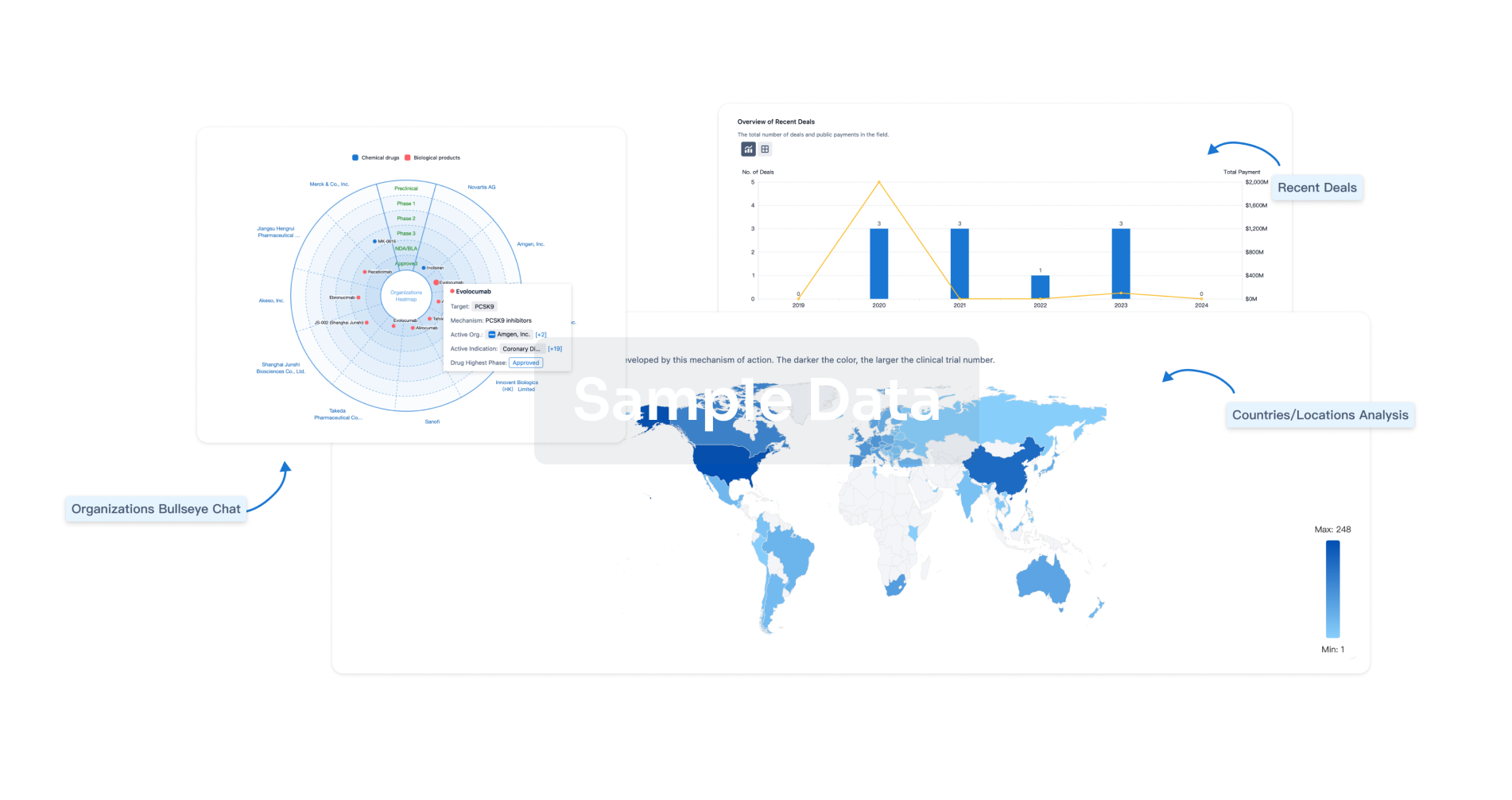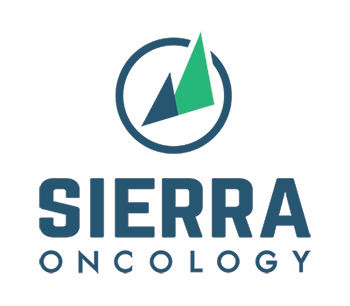Request Demo
Last update 08 May 2025
BRD4
Last update 08 May 2025
Basic Info
Synonyms BRD4, bromodomain containing 4, bromodomain-containing 4 + [8] |
Introduction Chromatin reader protein that recognizes and binds acetylated histones and plays a key role in transmission of epigenetic memory across cell divisions and transcription regulation (PubMed:20871596, PubMed:23086925, PubMed:23317504, PubMed:29176719, PubMed:29379197). Remains associated with acetylated chromatin throughout the entire cell cycle and provides epigenetic memory for postmitotic G1 gene transcription by preserving acetylated chromatin status and maintaining high-order chromatin structure (PubMed:22334664, PubMed:23317504, PubMed:23589332). During interphase, plays a key role in regulating the transcription of signal-inducible genes by associating with the P-TEFb complex and recruiting it to promoters (PubMed:16109376, PubMed:16109377, PubMed:19596240, PubMed:23589332, PubMed:24360279). Also recruits P-TEFb complex to distal enhancers, so called anti-pause enhancers in collaboration with JMJD6 (PubMed:16109376, PubMed:16109377, PubMed:19596240, PubMed:23589332, PubMed:24360279). BRD4 and JMJD6 are required to form the transcriptionally active P-TEFb complex by displacing negative regulators such as HEXIM1 and 7SKsnRNA complex from P-TEFb, thereby transforming it into an active form that can then phosphorylate the C-terminal domain (CTD) of RNA polymerase II (PubMed:16109376, PubMed:16109377, PubMed:19596240, PubMed:23589332, PubMed:24360279). Regulates differentiation of naive CD4(+) T-cells into T-helper Th17 by promoting recruitment of P-TEFb to promoters (By similarity). Promotes phosphorylation of 'Ser-2' of the C-terminal domain (CTD) of RNA polymerase II (PubMed:23086925). According to a report, directly acts as an atypical protein kinase and mediates phosphorylation of 'Ser-2' of the C-terminal domain (CTD) of RNA polymerase II; these data however need additional evidences in vivo (PubMed:22509028). In addition to acetylated histones, also recognizes and binds acetylated RELA, leading to further recruitment of the P-TEFb complex and subsequent activation of NF-kappa-B (PubMed:19103749). Also acts as a regulator of p53/TP53-mediated transcription: following phosphorylation by CK2, recruited to p53/TP53 specific target promoters (PubMed:23317504).
Acts as a chromatin insulator in the DNA damage response pathway. Inhibits DNA damage response signaling by recruiting the condensin-2 complex to acetylated histones, leading to chromatin structure remodeling, insulating the region from DNA damage response by limiting spreading of histone H2AX/H2A.x phosphorylation. |
Related
247
Drugs associated with BRD4Target |
Mechanism BRD4 inhibitors [+1] |
Originator Org. |
Active Indication |
Inactive Indication |
Drug Highest PhasePhase 3 |
First Approval Ctry. / Loc.- |
First Approval Date20 Jan 1800 |
Target |
Mechanism BRD4 inhibitors |
Active Org. |
Originator Org. |
Active Indication |
Inactive Indication |
Drug Highest PhasePhase 2 |
First Approval Ctry. / Loc.- |
First Approval Date20 Jan 1800 |
Target |
Mechanism BRD4 inhibitors |
Active Org. |
Originator Org. |
Active Indication |
Drug Highest PhasePhase 1/2 |
First Approval Ctry. / Loc.- |
First Approval Date20 Jan 1800 |
53
Clinical Trials associated with BRD4NCT06590324
A Phase II, Multi-centre Open Label Study to Assess the Efficacy and Safety of Oral Apabetalone With Background Dapagliflozin in Subjects With Long -COVID-19 (Post-COVID-19 Conditions) and Type 2 Diabetes Mellitus (T2DM)
This is an open label, multicentre, phase II clinical trial that aims to assess the efficacy and safety of oral Apabetalone with background dapagliflozin for up to 12 weeks in T2DM patients with a history of probable or confirmed SARS-CoV-2 infection, with symptoms within 3 months from the onset of COVID-19 that last for at least 2 months and cannot be explained by an alternative diagnosis.
Start Date15 Apr 2025 |
Sponsor / Collaborator |
NCT03160430
A Two-Part Phase 2a Study in Patients With End-Stage Renal Disease Treated With Hemodialysis; Part A is an Open-Label Study Arm to Evaluate the Effect of Hemodialysis on the Pharmacokinetics of 100 mg RVX000222; and Part B is a Double-Blind, Randomized, Placebo-Controlled, Sequential Cross-Over Study Arm to Evaluate the Efficacy, Safety, and Pharmacokinetics of RVX000222
This is a multi-center, two-part study; Part A and Part B. Part A of the study is an open-label, single-dose pharmacokinetic (PK) evaluation of 100 mg RVX000222 on dialysis and non-dialysis days in eight (8) End Stage Renal Disease (ESRD) patients who receive hemodialysis as standard of care.
Part B of the study is a double-blind, placebo-controlled study in up to thirty six (36) ESRD patients receiving hemodialysis using a sequential cross-over design with RVX000222 at a daily oral dose of 100 mg b.i.d. (200 mg per day) or matching placebo in combination with SoC.
The primary objective of the study is to evaluate if treatment with RVX000222 in combination with standard of care (SoC) decreases plasma alkaline phosphatase in comparison to placebo and SoC.
Part B of the study is a double-blind, placebo-controlled study in up to thirty six (36) ESRD patients receiving hemodialysis using a sequential cross-over design with RVX000222 at a daily oral dose of 100 mg b.i.d. (200 mg per day) or matching placebo in combination with SoC.
The primary objective of the study is to evaluate if treatment with RVX000222 in combination with standard of care (SoC) decreases plasma alkaline phosphatase in comparison to placebo and SoC.
Start Date22 Nov 2024 |
Sponsor / Collaborator |
CTR20233943
一项评价蛋白质降解剂注射用RNK05047在晚期实体瘤和淋巴瘤受试者中的安全性、耐受性、药代动力学、药效学和疗效的开放、多中心的Ⅰ期临床试验
[Translation] An open, multicenter Phase I clinical trial to evaluate the safety, tolerability, pharmacokinetics, pharmacodynamics and efficacy of the protein degrader RNK05047 for injection in subjects with advanced solid tumors and lymphomas
确定RNK05047在晚期实体瘤和淋巴瘤患者中的2期临床推荐剂量(RP2D),评价RNK05047在晚期实体瘤和淋巴瘤患者中的安全性和耐受性。评价RNK05047的药代动力学(PK)特征,抗肿瘤活性的初步证据。探索安全性和/或疗效终点与PK/PD的关系。评估与RNK05047相关的生物标志物,探索生物标志物的变化和治疗结果的关系。
[Translation]
Determine the recommended Phase 2 clinical dose (RP2D) of RNK05047 in patients with advanced solid tumors and lymphomas, and evaluate the safety and tolerability of RNK05047 in patients with advanced solid tumors and lymphomas. Evaluate the pharmacokinetic (PK) characteristics of RNK05047 and preliminary evidence of anti-tumor activity. Explore the relationship between safety and/or efficacy endpoints and PK/PD. Evaluate biomarkers associated with RNK05047 and explore the relationship between changes in biomarkers and treatment outcomes.
Start Date19 Feb 2024 |
Sponsor / Collaborator |
100 Clinical Results associated with BRD4
Login to view more data
100 Translational Medicine associated with BRD4
Login to view more data
0 Patents (Medical) associated with BRD4
Login to view more data
2,752
Literatures (Medical) associated with BRD401 Aug 2025·Tissue and Cell
Inhibition of BRD4 alleviates pyroptosis induced by testicular ischemia/reperfusion injury through the NLRP3 pathway
Article
Author: Li, Haoyong ; Wang, Jinrun ; Zhou, Zhiyan ; Ning, Jinzhuo
01 Jul 2025·European Journal of Pharmacology
Synergistic effects of BET inhibitors and ferroptosis inducers via targeted inhibition of the BRD4/c-Myc/NRF2 pathway in AML
Article
Author: Qiu, Kangjie ; Liu, Xin ; Dai, Zhangshuai ; Chen, Cunte ; Li, Yangqiu ; Zhong, Mengjun ; Zeng, Chengwu ; Zhong, Shuxin ; Peng, Xueting ; Yu, Zhi ; Sui, Songnan ; Nie, Dingrui ; Wang, Xianfeng ; Yu, Quan
01 Jun 2025·Veterinary Microbiology
Transcriptome profiling reveals that the host BRD4 protein facilitates African swine fever virus infection and suppresses inflammatory cytokine expression by downregulating transcriptional regulatory signaling pathways
Article
Author: Yang, Jifei ; Hao, Rongzeng ; Tian, Zhancheng ; Guan, Guiquan ; Sun, Hualin ; Zhang, Zhonghui ; Luo, Jianxun ; Yin, Hong ; Niu, Qingli ; Wu, Mengli
40
News (Medical) associated with BRD419 Aug 2024
BOSTON--(
BUSINESS WIRE
)--
DeepCure
, a therapeutics company using AI to discover novel drugs for inflammation and immune diseases, today announced a collaboration with one of the world’s premier research centers for rheumatoid arthritis (RA), the Leeds Institute of Rheumatic and Musculoskeletal Medicine (LIRMM). The collaboration will investigate DC-9476, a third-generation selective BRD4 (BD2) inhibitor, as a potential treatment for over a million patients worldwide with RA who do not respond well to current standard of care.
DC-9476 is a development candidate that inhibits the Brd4 protein which belongs to the BET family of proteins. DC-9476 decreases tissue and blood levels of cytokines that are key regulators of innate and adaptive immunity, such as TNF-alpha, IL6, IL-17, and IL-1b, which are up-regulated in autoimmune diseases. The development candidate is designed to have greater selectivity for Brd4 and BD2 than previous generations of BET inhibitors to increase safety. In preclinical RA models, DC-9476 demonstrated better safety and efficacy compared to RA treatments that are the standard of care, including TNF-inhibitors and JAK inhibitors.
The experienced team at LIRMM will investigate DC-9476 using blood samples and joint biopsies from multiple patient subgroups, in combination with the advanced translational tools developed at the institute. In particular, the studies will focus on samples from patients that are classified as difficult to treat or refractory to current approved therapies. The studies will include examining gene expression patterns and cytokines measurements in patient cells and tissues.
“We are thrilled to collaborate with DeepCure on this innovative project,” said Dr. Kulveer Mankia, Clinical Associate Professor and Honorary Consultant Rheumatologist, Leeds Institute of Rheumatic and Musculoskeletal Medicine, Chapel Allerton Hospital. “DC-9476 may represent a novel approach to treating people with RA who have not responded well to current therapies and have limited treatment options. We believe these patients could potentially benefit from DC-9476 due to its activity against multiple immune pathways, and we are hopeful that this partnership will lead to a significant breakthrough for patients.”
“We’re excited to work with the clinicians and scientists at LIRMM and will benefit from their deep expertise in the complexities of RA and the unmet needs of patients,” said Kfir Schreiber, CEO & Co-Founder of DeepCure. “This collaboration allows us to evaluate the efficacy of DC-9476 in patient-derived samples and help identify RA patient subgroups that will benefit the most from this compound.”
About DeepCure
DeepCure was founded by researchers at MIT to accelerate breakthrough therapies using artificial intelligence (AI) and AI-enabling technologies to innovate small molecule discovery. The company is based in Boston, MA, and its engineers, chemists, and biologists collaborate on hard problems to find solutions that will have an enormous impact on patient health. For more information, visit
www.deepcure.ai
.
08 Aug 2024
SAN DIEGO--(
BUSINESS WIRE
)--Actio Biosciences, a biotechnology company leveraging a novel platform approach to genetics and precision medicine to develop new therapeutics that target shared underlying biology in both rare and common diseases, today announced the U.S. Food and Drug Administration (FDA) has granted both orphan drug designation (ODD) and rare pediatric disease designation (RPDD) for ABS-0871, a TRPV4 inhibitor, for the treatment of TRPV4+ Charcot-Marie-Tooth disease subtype 2C (CMT2C).
“TRPV4 mutations cause CMT2C, a devastating disease that leads to debilitating and life-threatening symptoms, such as severe muscle weakness, vocal cord paresis and respiratory complications,” said David Goldstein, Ph.D., co-founder and CEO of Actio. “We are pleased to have received these designations from the FDA for ABS-0871 for CMT2C, a decision that underscores the recognition of the urgent need for new treatments for these patients.”
“We are thrilled to celebrate our STAR Alliance Partner, Actio Biosciences, for receiving both orphan drug and rare pediatric disease designations from the FDA for ABS-0871 in CMT2C,” said Charcot-Marie-Tooth Association CEO Sue Bruhn, Ph.D. “The collaborative efforts showcased through our Patients as Partners platform were instrumental in reaching this milestone, demonstrating the power of uniting the CMT community with industry leaders. This significant progress is a testament to the strength and dedication of our community, who made this achievement possible.”
The FDA grants orphan drug designation, also referred to as orphan status, to therapies intended for the treatment of rare diseases that affect fewer than 200,000 people in the U.S. This designation provides certain benefits, including tax credits for qualified clinical testing, waiver or partial payment of FDA application fees and seven years of market exclusivity, if approved. Separately, rare pediatric disease designations are granted for rare diseases that primarily affect children under 18 years old with recipients of this designation being awarded a priority review voucher, upon approval. The priority review voucher may be redeemed, transferred, or sold.
About TRPV4 and ABS-0871
TRPV4 mutations cause two classes of rare autosomal dominant disorders: peripheral neuropathies including CMT2C, and skeletal dysplasias. Currently, there is no specific treatment available for TRPV4-mediated diseases.
Actio’s lead small molecule program, ABS-0871, targets TRPV4 mutations and is advancing towards the clinic for the treatment of CMT2C and TRPV4 related bone diseases. Evaluation of this program in novel construct-valid preclinical TRPV4 rare disease models has demonstrated marked improvements in motor function and mobility, compared to untreated controls.
About Actio Biosciences
Actio Biosciences is leveraging advances in precision medicine to develop new therapeutics that target shared genetics in rare and common diseases—bringing meaningful medicines from one to many. Applying its expertise in genetics, drug discovery and data sciences, Actio seeks to identify programs where both biological and technical risk can be minimized to streamline the drug development process and bring forward exceptionally potent and precisely targeted therapeutics. Founded in October 2021, the San Diego-based company is led by leaders in genetics and drug development and backed by top healthcare investors. For more information, please visit ActioBiosciences.com.
Orphan DrugClinical StudyPriority Review
08 Aug 2024
BOSTON--(
BUSINESS WIRE
)--
DeepCure
, a therapeutics company using AI to discover novel drugs for inflammation and immune diseases, today announced the selection of its first development candidate, DC-9476. DC-9476 is a third generation BRD inhibitor that is selective for the BD2 domain of Brd4, which is expected to enter clinical trials in 2025. The BD2 domain of Brd4 regulates multiple, clinically validated, cytokine-related pathways, such as TNF-alpha, IL6, IL-17, and IL-1b, that are important in a variety of autoimmune diseases.
Many autoimmune diseases have epigenetic changes, including histone modifications that alter chromatin structure and gene expression. The BET family of proteins, which includes Brd4, that “read” these histone modification can cause patterns of gene expression in innate and adaptive immune cells that persist long after the stimulus is gone. In addition, Brd4 BD2 activity can also directly regulate transcription factors. Inhibition of Brd4 BD2 by small molecule drugs can break a self-perpetuating cycle of gene expression that can occur across multiple pathways that is detrimental to normal tissues and reinstate self-resolving processes that should follow inflammatory triggers.
DC-9476 has shown promising efficacy in multiple preclinical models of autoimmune diseases, including rheumatoid arthritis (RA) and Still’s disease. In RA models, DC-9476 was superior to standard of care therapies, TNF-alpha inhibitors, IL-6 inhibitors, and the JAK inhibitor tofacitinib, and it also improved the effectiveness of TNF-alpha inhibitors when used in combination therapy. Unlike earlier generations of non-selective inhibitors, DC-9476 has an excellent safety profile and did not cause thrombocytopenia.
The novel candidate was discovered using DeepCure’s proprietary AI platform by exploiting differences in the structure and function among the BET protein family and the two bromodomains (BD1 and BD2). DeepCure’s AI platform integrates advanced ML and physics-based tools to find interaction sites on the protein surface (PocketExpander™) and to design novel, diverse compounds that are synthetically feasible (MolGen™).
“In the past years of translational and clinical research we have learnt that autoimmune diseases are the effect of multiple deranged pathways. Targeted therapies against specific cytokines, kinases or receptors have offered a first important boost in how we manage these conditions but patients would benefit enormously from pharmacological inhibition of multiple inflammatory pathways,” said Professor Francesco Del Galdo, M.D., Ph.D., Professor of Experimental Medicine NIHR Biomedical Research Centre and Institute of Rheumatic and Musculoskeletal Medicine University of Leeds. “However, current attempts with simply combining clinically existing therapies that target individual pathways have shown limited success, mostly due to increased toxicity. New therapeutics such as DC-9476 that have a novel mechanism to address simultaneously multiple pathways while also having an excellent safety profile, are extremely promising for the field.”
“We’re excited to announce our first AI-generated candidate, which we plan to advance into clinical trials next year. This validates our generative AI and physics-based drug discovery engine,” said Kfir Schreiber, CEO & Co-Founder, DeepCure. “DC-9476 is the first of many novel development candidates to emerge from our platform, with the potential to transform the treatment of inflammation and immune diseases.”
About DeepCure
DeepCure was founded by researchers at MIT to accelerate breakthrough therapies using artificial intelligence (AI) and AI-enabling technologies to innovate small molecule discovery. The company is based in Boston, MA, and its engineers, chemists, and biologists collaborate on hard problems to find solutions that will have an enormous impact on patient health. For more information, visit
www.deepcure.ai
.
Analysis
Perform a panoramic analysis of this field.
login
or

AI Agents Built for Biopharma Breakthroughs
Accelerate discovery. Empower decisions. Transform outcomes.
Get started for free today!
Accelerate Strategic R&D decision making with Synapse, PatSnap’s AI-powered Connected Innovation Intelligence Platform Built for Life Sciences Professionals.
Start your data trial now!
Synapse data is also accessible to external entities via APIs or data packages. Empower better decisions with the latest in pharmaceutical intelligence.
Bio
Bio Sequences Search & Analysis
Sign up for free
Chemical
Chemical Structures Search & Analysis
Sign up for free






